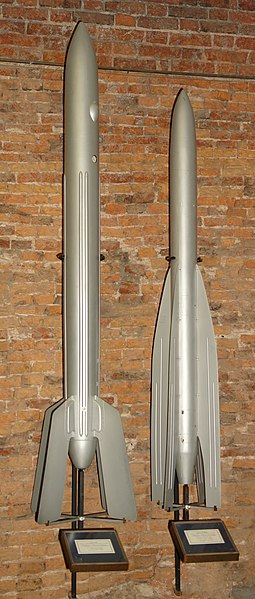Robert Hutchings Goddard was an American engineer, professor, physicist, and inventor who is credited with creating and building the world's first liquid-fueled rocket, which was successfully launched on March 16, 1926. By 1915 his pioneering work had dramatically improved the efficiency of the solid-fueled rocket, signaling the era of the modern rocket and innovation. He and his team launched 34 rockets between 1926 and 1941, achieving altitudes as high as 2.6 km (1.6 mi) and speeds as fast as 885 km/h (550 mph).
Robert H. Goddard
Goddard at Clark University
Goddard loading a bazooka in 1918
Robert Goddard, bundled against the cold weather of March 16, 1926, holds the launching frame of his most notable invention—the first liquid-fueled rocket.
A liquid-propellant rocket or liquid rocket utilizes a rocket engine burning liquid propellants. (Alternate approaches use gaseous or solid propellants.) Liquids are desirable propellants because they have reasonably high density and their combustion products have high specific impulse (Isp). This allows the volume of the propellant tanks to be relatively low.
Bipropellant liquid rockets are simple in concept but due to high temperatures and high speed moving parts, very complex in practice.
The NMUSAF's Me 163B Komet rocket plane
Titan II
Rocket 09 (left) and 10 (GIRD-09 and GIRD-X). Museum of Cosmonautics and Rocket Technology; St. Petersburg.








